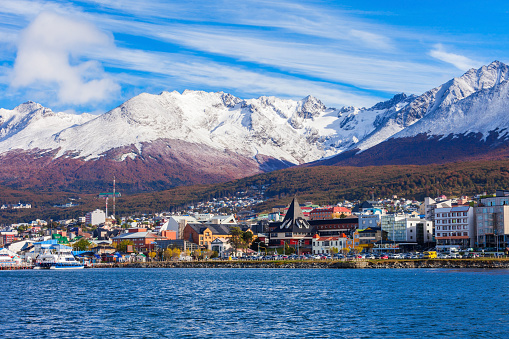
Buenos Aires Travel What You Need to Know
Buenos Aires is not only the capital of Buenos Aires, Argentina: Paris of South Americaâ?Â, Buenos Aires also has the most theatres in Latin America and is the birthplace of Pope Francis. The name Buenos Aires translated in English is: Fair Winds, which is indicative to a story about a statue of the Virgin Mary that was retrieved in the ocean right after a strong storm had calmed. The statue was recognized as the Virgin of Buen Aire who sailors would pray to for fair winds, to aid them in navigation, and to event loss at sea or worse.
Until the 1920s when Parisians adopted the sensual dance moves, Tango was deemed unrespectable. In fact, the dance style became so popular, UNESCO's Intergovernmental Committee of Intangible Heritage acknowledged tango as being part of the world's cultural heritage. This made it possible for Argentina to receive funds specific to preserving the tradition for future generations.
The architecture in Buenos Aires resembles that of Barcelona, Madrid, and
Paris. The influence can clearly be seen in the Teatro Colon, the Palace of
Justice, and others buildings built by architects such as Vittorio Meano.
Climate
Buenos Aires climate can be characterized as Hot & Humid during the summer months of December, January, & February. The warmest month in summer is January with an average temperature of 77 degrees Fahrenheit. Autumn months of March, April, and May as well as winter months (June, July, and August) are known to be temperate with fog. The coldest month in winter is July with an average temperature of 57 degrees Fahrenheit. Springtime (September, October, and November) is known to be windy and most of the rainfall is seen during this time.
Best Time to Travel to Buenos Aires
There really isn't a bad time to visit Buenos Aires; but, it's go abandoned by the locals who go on vacation and leave the city scarce. However, it's said the best time to visit Buenos Aires is during the summer months. Jacaranda Trees, which blossoms purple, fragrant, huge lobed trumpet-shape flowers bloom during the spring months of October & November. The trees have a height of up to fifty feet and a span of up to sixty feet, making them giant tropical beauties. If you're a skier heading to Bariloche, Buenos Aires would be an excellent stop-over.
Getting Here
Buenos Aires is the gateway into Argentina and it's easily accessible from the United States, Europe, and Australia. Ezeiza International Airport (Airport Code: EZE) is located twenty miles south of Buenos Aires. Non-Stop service flights into and out of Buenos Aires are available with airlines such as: Air France (Paris), AlItalia (Rome), American Airlines (Miami & JFK), British Airways (London), Delta (Atlanta), Iberia (Madrid), KLM (Amsterdam), Lufthansa (Frankfurt), Turkish (Istanbul)
There are several reputable tour operators such as Cosmos, Collette, Globus, Trafalgar that provide itineraries that include Buenos Aires. These tours vary in length from 11 to 24-days whether it's only introducing Buenos Aires as one of the three jewels of South America including Iguazu Falls & Rio de Janeiro or in longer trips including Lima and Santiago.
Do and See
There are several things to do and see in Buenos Aires, beginning with Tango followed by Theatre, Museums, & Books! Did you know Buenos Aires is sometimes called the City of Books? There are hundreds of bookstores throughout the city! Argentinians are known to be voracious readers, reading in the park, on the bus, and in bookstores. Jorge Luis Borges (Argentinian writer, poet, Critic, & Librarian) once said, Let others pride themselves about how many pages they have written; I'd rather boast about the ones I've readÂ. World renowned bookshop, El Ateneo was nominated second most beautiful bookshop in the world.
The architecture in Buenos Aires alone can keep the passerby busy for days on end comparing the style of one building to the influences brought by Italy as opposed to the influences of another brought by that of France. With more theatres than any other city in Latin America, Buenos Aires theatre culture is literally alive and kicking. With a massive upgrade that took twenty years to complete, the Teatro Colon that stands today, which reopened its doors in 1908, replaced the original theatre that first opened in 1857.
